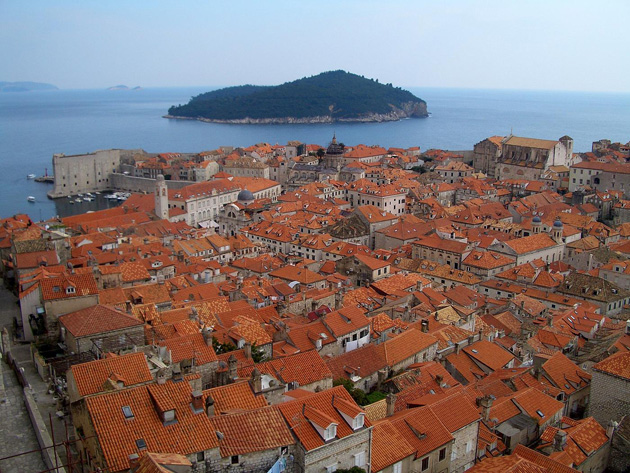
road trip south along croatia’s coastal highway to dubrovnik
Posted on April 17, 2010 at 9:32pm Madrid / 3:32pm Cincinnati by Kelly Larbes

Most people in the United States can’t name one city in Croatia, and among those who can, it is usually Dubrovnik. Dubrovnik is Croatia’s most popular tourist city, and a few months ago CNN hailed Dubrovnik as the new hotspot for U.S celebrities. Visitors have included Beyonce, Jay-Z, Kevin Spacey, Stephen Spielberg, Andre Agassi, Gwyneth Paltrow, Tara Reid, Robert De Nero, Clint Eastwood and Sharon Stone. It is the city my family knew (and loved) before we moved here because they stopped there on their Mediterranean cruise a few years ago after Kevin finished studying in Barcelona. And yet somehow it took us over a year living in Croatia to make it there.
We finally made the visit last Saturday and it was the perfect time of the year; we avoided the insane summer crowds and we still had great weather. The day started out with another great road trip. We were on the same coastal highway we took a few weeks ago, but this time we set off south and we were with our friends, Milda and Mario. The highway hugged the coast the entire four hour drive to Dubrovnik. We stopped twice: once for a photo opportunity and once for short snack break. The scenery made the time pass quickly and I snapped lots of
photos out the car window as we drove along.
Our snack break was actually in Bosnia and Herzegovina. Bosnia and Herzegovina has a short strategic stretch of coast 16 miles long that divides Croatia. It felt odd having to go through passport control twice in 20 minutes. And I think the passport control agents found it odd to be handed one Croatian passport, one Lithuanian passport, and two American passports.
As we neared Dubrovnik, it started to rain and we worried our day might be a wash, but luckily it lasted just five minutes and the sun came right back out. The Old Town of Dubrovnik is crammed full of tiny houses, churches, schools, and winding alleyways. Walking through the town reminded me a lot of walking through Split’s Diocletian Palace. But there are two things that Dubrovnik has that separates it from other Croatian towns: It is surrounded by an ancient fortified wall that provides a picturesque walk and almost ALL of the roofs are orange tiles creating an idyllic view.
As we walked through town I noticed that our shoes and accessories dictated our continents and we perfectly fit the stereotypes. Milda carried an over-sized red purse and wore cute ballet flats. Mario carried a fanny pack and wore brown walking shoes. (Fanny packs are very popular among Croatian men, which used to make Jay and I chuckle, but the novelty has since worn off .) Jay and I shared a backpack and wore gym shoes – so American. Classic.
The mile and a quarter walk along Dubrovnik’s town walls is one of its main attractions since it provides sweeping views of both the town and sea. The walls were built during the 15th century and around the perimeter there are several substantial forts. The first time the walls were actually used in defense against an attack was very recently during the war in 1991 and 1992. Citizens huddled in the forts as Serbs surrounded and bombed the city. The Serbs thought Dubrovnik would be an easy win, a big hit on Croatia’s moral, and a good place to push north to Split. But Dubrovnik’s residents resisted the siege better than anyone expected and after eight months of bombing, the Croatian army was able to liberate Dubrovnik. In the end, more than two-thirds of Dubrovnik’s buildings had been damaged. Luckily the city decided to rebuild with the same materials and methods that it was originally built. The largest evidence of war that remains is that so many of the roofs look new and brightly colored.
Milda and Mario had walked the walls during earlier visits so they went for a coffee while we continued to the walls. Last year there was a $10 admission fee to the walls and this year they jacked up the prices to $14 per person. Luckily they accepted our student IDs (which are now 9 years old and barely look like us) and we paid just $6 each. Walking along the walls lived up to our expectations. We were happy that it was off-season and late in the afternoon, so we had most of the walk to ourselves. I snapped some photos and tried to figure out from which spot my family had taken their photos years earlier. We saw a guy fishing in solitude among tall rocks at the base of the walls and thought of Jay’s dad. We wished he was here to enjoy the good fishing and pretty scenery.
After we met up with Milda and Mario again we headed to a cafe that clung to the outside of the walls and sat atop rocks that dove straight down into the sea. We enjoyed the day’s last bit of warm sunshine as it was coming to an end. Before beginning back to Split, we drove to a panoramic view point that overlooked the Old Town. Croatia’s new A-1 highway has not yet been completed down to Dubrovnik so we journeyed back the way we came.
We appreciated having time to get to know Milda and Mario a bit more. Mario grew up in Stobrec, one of Split’s suburbs, and Milda grew up in Lithuania (former Soviet Union). They both joke about being Communist children and are nice enough to put up with our naive questions about the war and the fall of Communism. I think it helps that they were both too young to understand the devastation of the war at the time. Most of their memories are from those transition years from Communism to Capitalism.
I found it interesting that Mario had similar memories of the war as my co-worker, Maja. He was only eight years old when it began and his parents sheltered him from much of what was going on (which is pretty easy to do when there was no Internet, the media was state-controlled, and Split saw very little action during the war). He remembers the windows being covered so no light would escape and people driving without their headlights, but recalls the air raids almost as ‘play time’. During raids he got to stay home from school, eat candy and play in the basement with his friends. That’s a good life for an eight-year-old.
The Soviet Union suffered more than Yugoslavia during communism (much of the world supported Yugoslavia because they were anti-Soviet Union) so it seems that Lithuanian had a bigger transition from Communism to Capitalism than Croatia did. Though Lithuania didn’t have to brave a war to see it happen. Milda remembers Lithuania being a bit in Anarchy. No one knew what to do or how to successfully govern after Communism fell. Gangs ruled territories and did as they pleased. Her father had a restaurant, but closed it because gangs would come, eat what they wanted, and leave without paying; it wasn’t safe. It’s hard to believe how quickly things have changed; Lithuania is already part of the European Union – and Croatia still is not, but may join in 2011 or 2012.
People’s lives changed so drastically. In communist times, the government would assign new university graduates for work in the most-needed locations – people would not get to choose which city or town to live and work. But now, people could suddenly study what they wanted and work where they wanted. Like most grandma’s, Milda’s grandma is forgetful and would always ask Milda during university if she had received her “placement” yet. Milda would repeatedly have to remind her that things just weren’t like that anymore.
Choices became abundant. People could pick from 10 different cars instead of just 3. Produce showed up in stores that people had never seen. Milda remembers being six years old and seeing a banana for the first time — what a great memory.
My favorite memory Milda shared was that she and her family were part of the Baltic Way (or Baltic Chain) in 1989. The Baltic Way was when two million people joined hands to form a human chain over 370 miles long. The chain spread across the Soviet Union’s three Baltic states: Lithuania, Latvia, and Estonia. It was a peaceful protest to draw global attention to the popular desire for the independence of each state from the Soviet Union. Milda was only three years old when she attended the demonstration, so she isn’t really sure if she remembers it herself or she’s just been told stories so many times that they have become her memories. Either way, I think it was a pretty amazing piece of history, and a good story that made the ride home fly by.
Click here to view more of our photos from our day trip to Dubrovnik.

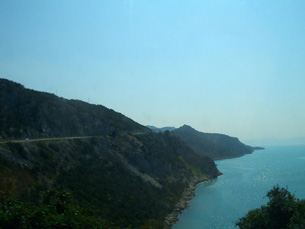
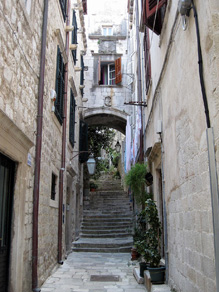
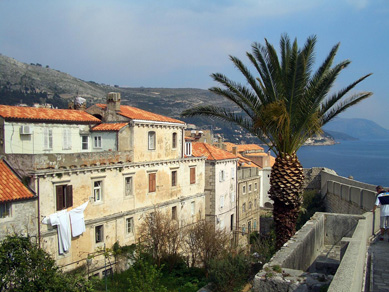
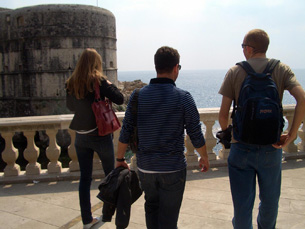

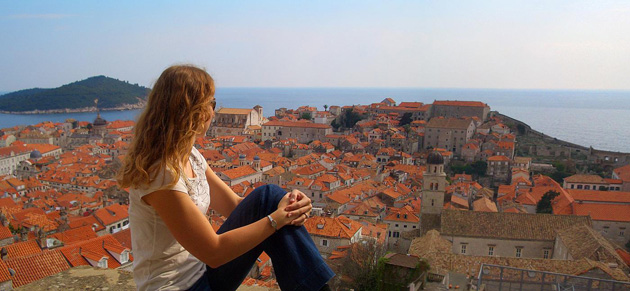
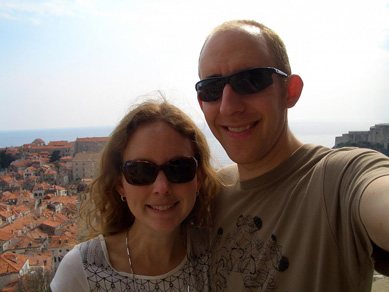
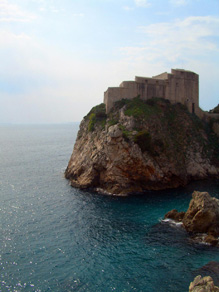

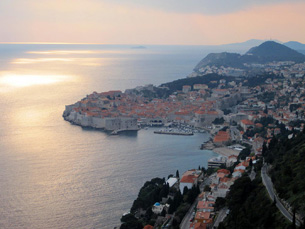
Hi Kids! I really enjoyed reading and viewing your travels to Dubrovnik. The pictures were awesome! You both are so fortunate to have each other and to be able to share these wonderful experiences LIVE & UPCLOSE that most of us can only dream of. Keep the pictures and stories coming. Love, Dad
Guys i love that shit 🙂
I mean the pics are fantastic and you can feel the heat, sun under your skin. Your blood bubbles while reading your text 🙂
great, I will print some pics for myself 🙂
I look forward to come to croatia this summer 🙂
Makes me happy ^___^
Hi! I just came across your blog while looking for day trips from Split and Dubrovnik. Your photos are really beautiful! My boyfriend and I (he’s French, I’m American) are going to Split on May 1st and then we head to Dubrovnik from May 4-8. I have always wanted to see Croatia and your blog and photos are making me wish I were there right now and that I could stay for months.
I had to laugh at the things that annoy you about Croatia because it’s basically the same things that annoy me about France. I also feel like we’re living 20 years in the past and will never get used to nothing being open on Sundays. I guess that’s just Europe in general though.
Anyway, just wanted to say hello from another Midwesterner (Michigan) and that I love your blog!
– Jennie
Really enjoyed the pics. It looks absolutely gorgeous and is definitely on “the list” of places to spend some time. Very inspirational.
Dad – Thanks for the comment. We think of you often, especially when we see anyone fishing!
Streetracer – I hope you always keep commenting because you always make me smile.
Jennie – I’m glad you enjoy the blog. I think you will have a great time in Croatia. There are so many things that can be frustrating about living here, but for a visit I think it is perfect. And you are coming at a great time – you should have beautiful weather and avoid the tourist crowds of July and August. You can find my suggestions for a day in Split if you are still looking for ideas here: http://www.pondjumperscroatia.com/split. I put this together for people arriving via cruise ship, but it is applicable for anyone spending a day in Split. I hope you have wonderful trip. Please visit back to the blog when you return to France and let us know how it went.
Larry – I hope you make it to Croatia. You won’t be disappointed. I feel lucky to get to see so much if its beauty.
It’s been a few weeks since we returned from Croatia and I’m still thinking about it. Split was lovely! Thanks for the great suggestions. I can’t wait for Croatia to join the EU so I can live and work there someday. 🙂
Jennie – I’m glad you enjoyed your time in Croatia and liked Split. Hopefully Croatia will be in the EU next year! It will make a lot of things easier and hopefully improve the quality of life for the average Croatian.
Sounds like a great trip. Dubrovnik is one of the most beautiful cities I’ve ever visited, too! Your photos and story really bring back the memories of my trip there, but that was some time ago. This makes me want to go back, especially after seeing the views from the wall. Looking forward to reading more about your travels!
Bryan – Thanks for reading our stories. I am glad they brought back good memories for you. I know I will be telling stories about Croatia until I am old and gray haired. It is such a beautiful country.